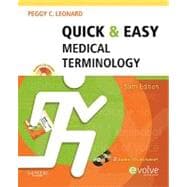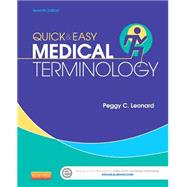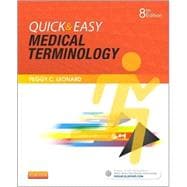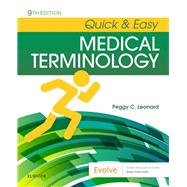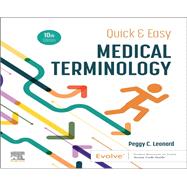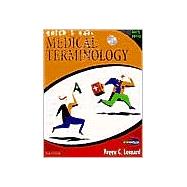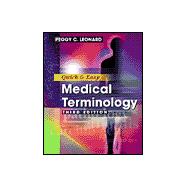Quick and Easy Medical Terminology
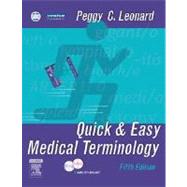
Quick and Easy Medical Terminology
- ISBN 13:
9781416024941
- ISBN 10:
1416024948
- Edition: 5th
- Format: Paperback
- Copyright: 10/27/2006
- Publisher: Elsevier Science Health Science div
- Newer Edition
Rent
Sorry, this item is currently unavailable.
Note: Supplemental materials are not guaranteed with Rental or Used book purchases.
Extend or Purchase Your Rental at Any Time
Need to keep your rental past your due date? At any time before your due date you can extend or purchase your rental through your account.
Summary
Featuring a companion practice CD-ROM and audio pronunciations on CD, this textbook is designed to help students begin reading, writing and speaking medical terms immediately, giving them the tools needed for clear, efficient communication in the health care environment. The book presents small segments of information and immediately tests comprehension using an approach that combines tables and narrative interspersed with exercises. Programmed Learning Sections in each chapter consist of several blocks, or 'frames' of material in which the reader is asked to recall and write information previously presented. The student interacts with the content on every page by filling in the programmed sections and checking the answers immediately before deciding whether to proceed or to review material presented earlier. Quick & Easy Medical Terminology is organized by body systems, and after the first five orientation chapters have been completed, the remaining chapters can be studied in any sequence. It is ideal for shorter (1- or 2-credit) courses in medical terminology and for self-study courses, in addition to traditional, lecture-format classes. The companion CD-ROM reinforces learning with practice exercises, score reporting, and printing. Two audio CDs enable students to hear correct pronunciations of medical terms presented in the book. Flexible, body systems organization enables the material to be covered in any order after the first five orientation chapters are completed, making it easy to coordinate with anatomy and physiology or other related courses. The book's programmed learning approach presents content in blocks called 'frames' that allow students to learn the content and check their progress before reviewing the material or proceeding. Realistic questions are based on simulated medical charts, allowing students to apply their knowledge to situations similar to those they will face on the job. Body systems chapters follow a consistent format (Function; Structure; Diseases, Disorders, and Diagnostic Terms; and Surgical and Therapeutic Interventions) to improve students' comprehension. An expanded, reorganized introduction strengthen students' foundation of knowledge before moving into the more focused body systems chapters. A review of anatomy and physiology provides an appropriate context for understanding the medical terminology in the body systems chapters. Spanish translations of key terms are listed in each chapter to familiarize students with the most common Spanish terminology encountered in the clinical environment. A broad variety of exercises accommodate diverse learning styles - labeling diagrams, writing terms, choosing pronunciation accents, recognizing misspelled terms, matching word parts, interpreting terms within health reports, and categorizing terms. Full-color illustrations and photos (more than 50% new to this edition) and an appealing design, enliven the presentation of content and retain students' interest longer. A chapter on diagnostic and therapeutic terms applicable to all body systems has been added to the orientation section at the beginning of the book. New Function First sections have been added at the beginning of the body systems chapters to orient to the student to each system's physiologic functions and show why they are important. Case studies now look like the actual reports, case notes, and medical records that students will encounter in the clinical environment. Caution boxes highlight important distinctions among terms that are similar in spelling and/or pronunciation. The nervous system and the endocrine system are now covered in separate chapters, giving more emphasis to these important systems. The practice CD-ROM includes new Hear It/Spell It exercises, which give the audio pronunciation and then reinforce with colorized




